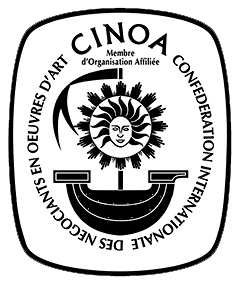Collectors' cabinet
Global shipping available
- Origin
- Italy, probably Lombardy
- Period
- 17th century
- Material
- Softwood glued with ebony and rosewood, drawers made of walnut, glued and inlaid with engraved ivory, Gilt brass
- Height
- 42 cm
- Width
- 54 cm
- Depth
- 35 cm
- Literature
R. Baarsen, 17de-eeuwse kabinetten, Rijksmuseum dossiers, Amsterdam 2000, p. 11, 12.
O. Impey, A. MacGregor, ‘The Origins of Museums: The Cabinet of Curiosities in Sixteenth- and Seventeenth-Century Europe (1985), in: S. Staniforth (ed.), Historical Perspectives on Preventive Conservation, Los Angeles 2013, pp. 78-82.
P. Lorenzelli & A. Veca, Trae - Teche, pissidi, cofani, e forzieri dall'Alto Medioevo al Barocco, Bergamo 1984, pp. 329 - 336, cat. no. 464, 466.- Museums
Metropolitan Museum of Art, New York, inv. no. X.203
Museum de Lakenhal, Leiden, inv. no. 4275
Questions about this object?
Please use one of the contact options below:
Description
This richly decorated Baroque cabinet of curiosity, originating in Italy, is made of a softwood body glued with ebony, rosewood and ivory. The base of the drawers consists of walnut. The fronts of the drawers are glued with ebony and ivory. The corners of the cabinet are finished with cast, gilded brass corner pieces. This brass casting was once used as drawer pullers and as carrying handles. The inside and outside of the cabinet are decorated with inlaid ivory in geometric patterns. Typical for this work is the inlaid rosewood where at the edges a lot of sapwood can be seen. This gave a certain architectural effect to the furniture. Inside the cabinet are ten drawers positioned around a central square, inlaid with engraved and blackened ivory. The drawers are decorated with stylised foliate rinceaux with birds and dragons and have gilded rings in the shape of lions' heads.
The front of the cabinet is decorated with a detailed depiction of Poseidon with his distinctive trident, seated in a shell-chariot pulled by two horses. Around him are two Nereids, a dragon, and birds depicted. On the right are the buildings of a port city. The central figurative panel depicts a female figure, dressed for battle. She has a shield in her left hand and a book with a lamb crowned with a halo in her right hand. On her head is a rooster and behind her are the arms of a cross. She stands in an arc-shaped symmetrical decor, filled with animals and tendrils. Behind this door is a space with two drawers above it. The fold-down flap of the cabinet was used as a writing surface, the gilded handles on the side indicate that it is travel furniture. The inside of the front plate is embellished with inlaid geometric patterns and lines.
Cabinets like this were made for the storage and display of art and curiosities. The owner of the cabinet thus showed his wealth and knowledge of the world. The collections of objects in a cabinet of curiosity could be divided into artificialia (man-made works of art and antiques), naturalia (natural objects such as shells and stones), exotica (exotic animals and plants), and scientifica (scientific instruments). Over time, these cabinets grew into "kunst- und wunderkammers", physical spaces in which art and curiosities were exhibited. These rooms filled with private collections were the precursors of the first museums.
For a very similar cabinet, see: Metropolitan Museum of Art, New York, inv. no. X.203 and Museum de Lakenhal, Leiden, inv. no. 4275.
Cites: 22NL308877/20









